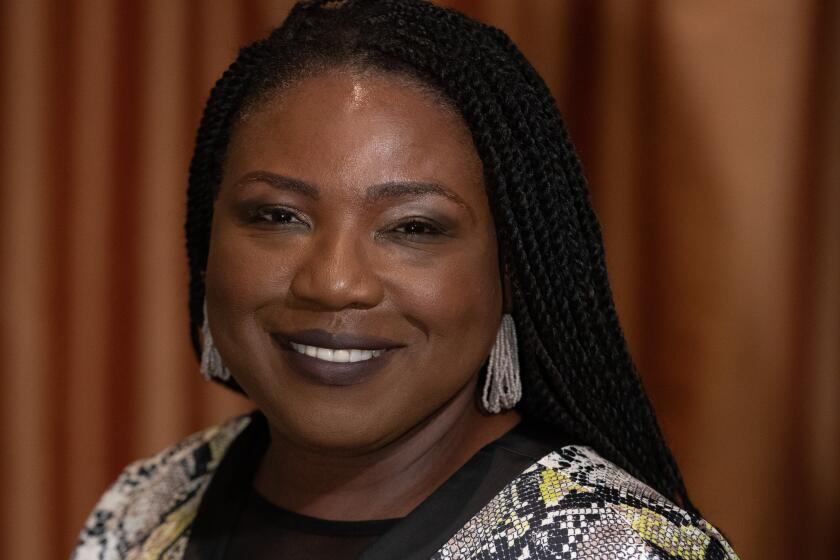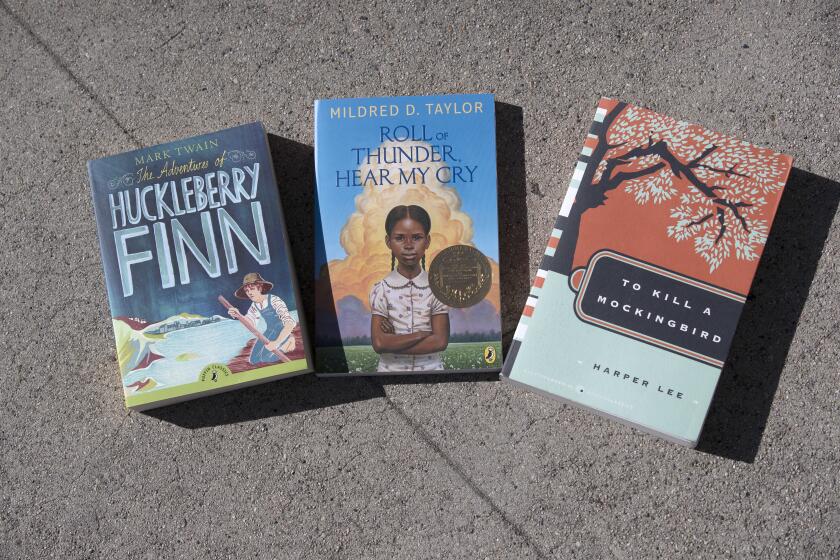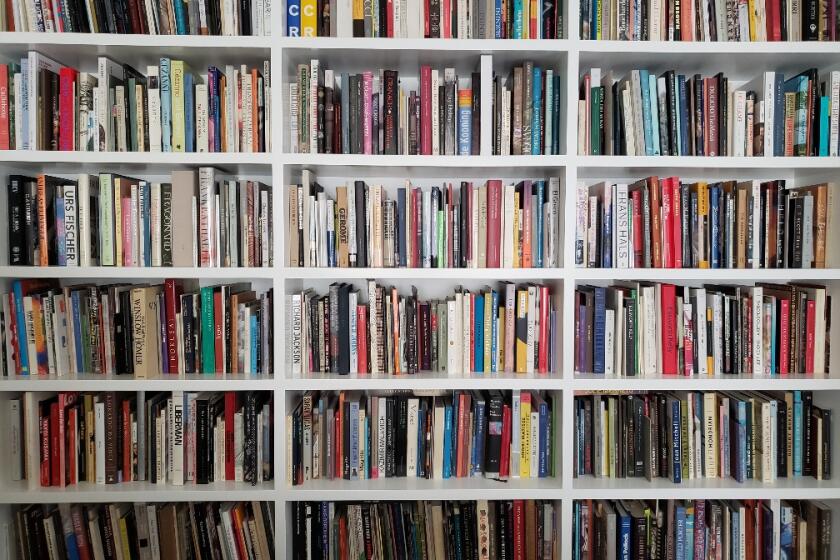School book bans have seen an unprecedented surge this year, a new report says

- Share via
If you’ve read a book in one sitting sometime in the last year, chances are another book was banned before you finished it.
According to a report from PEN America released Monday, a book ban was enacted in an American school district every 3½ hours between July 2021 and July 2022.
The eye-opening report showcases how widespread book banning has become and how quickly it is accelerating. Nearly 140 school districts in 32 states issued more than 2,500 book bans during the 2021-22 school year, which affected nearly 4 million students across 5,000 schools, according to the report, “Banned in the USA: The Growing Movement to Censor Books in Schools.”
This movement is also targeting public libraries, including efforts to close or defund them and to fire, harass or otherwise intimidate librarians.
Tracie D. Hall, the South L.A.-raised executive director of the American Library Association, will receive the 2022 Literarian Award.
“This censorious movement is turning our public schools into political battlegrounds, driving wedges within communities, forcing teachers and librarians from their jobs, and casting a chill over the spirit of open inquiry and intellectual freedom that underpin a flourishing democracy,” said Suzanne Nossel, chief executive of PEN America, in the report.
Book-banning efforts have rapidly spread across the country at a pace not seen in decades, fueled in part by politics, social media and increasingly aggressive tactics. Among the books most frequently pulled from classrooms and school libraries are those about race, racism, gender and sexuality. Books that feature protagonists of color accounted for 40% of books banned; those with LGBTQ characters and themes made up 41%.
The new report also documents the growing number of organizations and coordinated groups ramping up efforts to ban books, with parents and community groups playing some role in at least half the book bans across the country during the last school year. In a few cases, people lodging complaints about books did not have children in public schools at the time. They range from Facebook groups to nonprofits like Moms for Liberty.
PEN America counted at least 50 groups promoting bans, most of them established in the last year.
Some argue the books under review — including “To Kill a Mockingbird” and two YA classics — instigated racist incidents; defenders believe they’re antiracist.
“The groups have found ways to put pressure on school boards, and they were really not prepared for this,” said Jonathan Friedman, the report’s author and director of free expression and education programs at PEN America. “They have not in recent memory been standing up for access to diverse literature in school libraries, so a lot of them were caught off guard... and as a result, they have given into these demands without much process.”
Unsurprisingly, politicians played a significant role in many book banning efforts. At least 40% of the bans found in the report were tied to legislation, either proposed or enacted, or lawmakers and state officials advocating for certain books and concepts to be restricted or removed from classrooms.
The new report expands on PEN’s April study, which covered July 2021 to March 2022, the first nine months of the school year.
On Friday, the American Library Assn. released its own findings, counting nearly 700 book challenges over the last eight months but documenting roughly the same number of unique titles banned — more than 1,600. Both organizations have released their reports in time for Banned Books Week, which began Sunday.
The three books most frequently targeted, according to PEN America, were Maia Kobabe’s memoir “Gender Queer,” banned in 41 districts; George M. Johnson’s “All Boys Aren’t Blue,” banned in 29 districts; and Ashley Hope Pérez’s “Out of Darkness,” banned in 24 districts. The authors with the most books challenged were those by Ellen Hopkins, Kobabe and legendary novelist (and perennial target) Toni Morrison.
The states with the most book bans were Texas, Florida and Pennsylvania. California had no bans documented under the report, which it defines as “any action taken against a book based on its content and as a result of parent or community challenges, administrative decisions, or in response to direct or threatened action by lawmakers or other governmental officials.”
Young America’s Foundation announced Monday that it would provide students in the Burbank Unified School District free copies of five books recently removed from the curriculum.
Friedman believes the growing movement does great harm to students. Beyond not seeing themselves reflected in books inside school classrooms and libraries, they were also vulnerable to far worse impacts, he said.
“Imagine you’re a LGBTQ youth and you see your school district banning all books that reflect your identity, what does that say about how the adults there think about you and your life choices?,” added Friedman. “This could have drastic effects on how people feel about themselves, psychological effects, beyond the fact that it’s also a violation of students’ rights.”
Part of the joy of reading is the way it can disturb us.
But Friedman noted that there is a bright side; many students and parents are pushing back.
“More students are getting involved and seeing this as an issue they need to champion in their schools, forming banned-books clubs and speaking out at school boards,” said Friedman.
“I think the next year is going to see greater efforts on the ground to really mobilize people to hold school boards to higher standards for how they stand up for their teachers, for their libraries and for their principles.”
More to Read
Sign up for our Book Club newsletter
Get the latest news, events and more from the Los Angeles Times Book Club, and help us get L.A. reading and talking.
You may occasionally receive promotional content from the Los Angeles Times.











